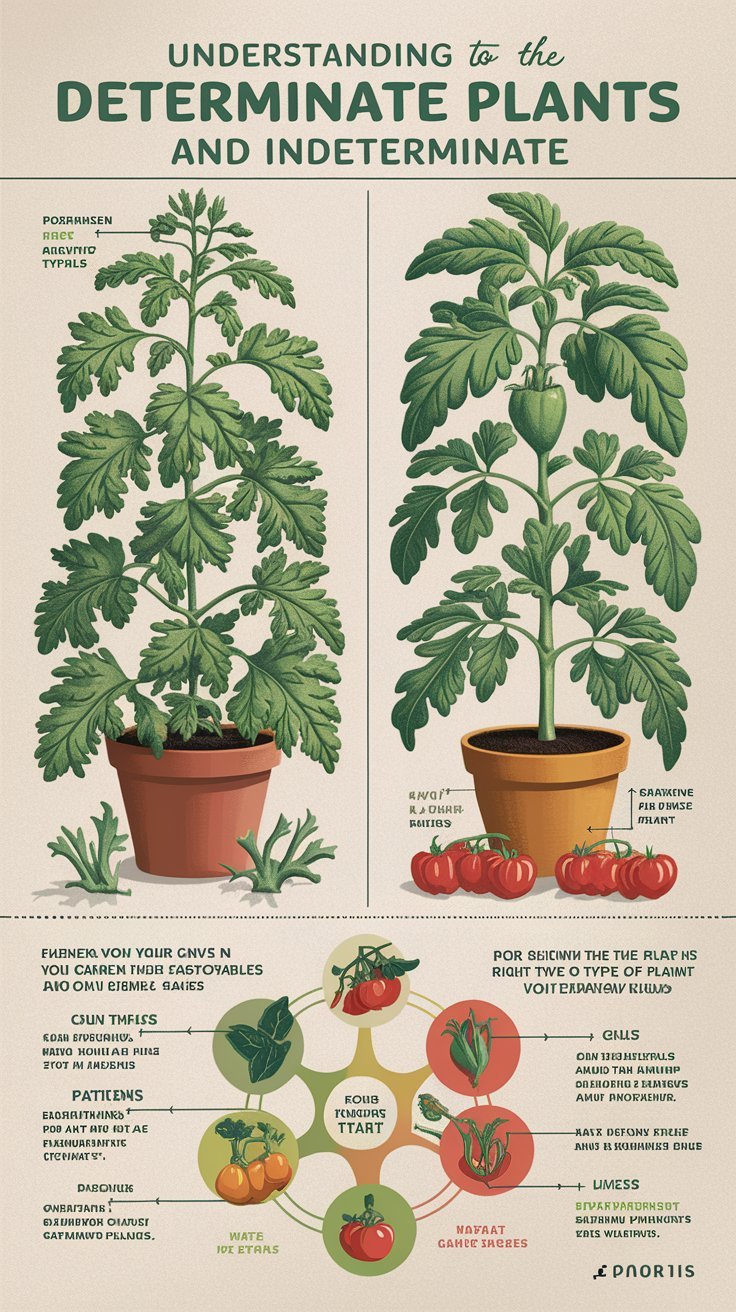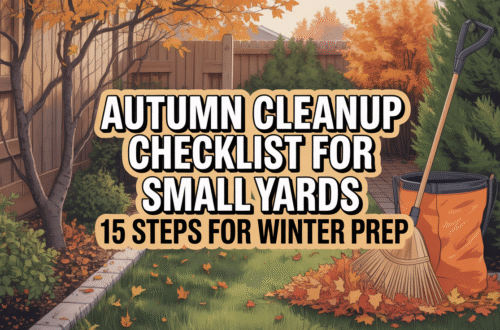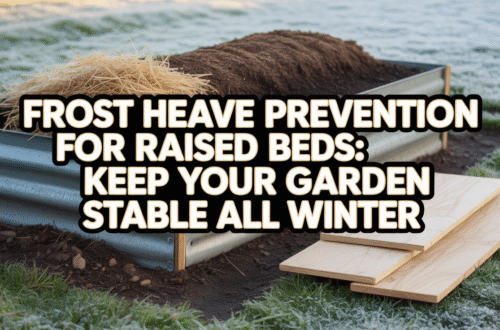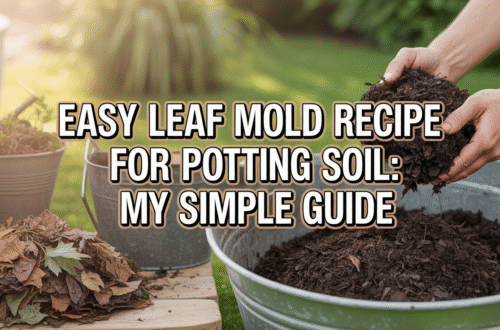Discover the key differences between determinate and indeterminate plants in our comprehensive guide. Learn about their growth habits, optimal cultivation techniques, and how to choose the right variety for your garden.
Determinate plants have a predetermined growth pattern and size, typically producing fruit all at once, while indeterminate plants continue growing and producing throughout the season. This fundamental difference affects their growth habits, harvest periods, and care requirements, making each type suitable for different gardening needs and spaces.
As a horticulturist with over 20 years of experience in both commercial and home gardening, I’ve worked extensively with both determinate and indeterminate plant varieties. Let me guide you through the key characteristics that set these plant types apart and help you choose the right option for your garden.
Quick Comparison Table

What Are Determinate Plants?

Determinate plants, also known as “bush” varieties, have a predetermined growth pattern and size. Here are their key characteristics:
- Growth Habit:
- Reach a specific height and then stop growing
- Typically more compact and bushy
- Fruiting Pattern:
- Produce most of their fruit over a short period (usually 1-2 weeks)
- All fruits tend to ripen around the same time
- Life Cycle:
- Once fruiting is complete, the plant generally declines and dies
- Examples:
- Many tomato varieties (e.g., Roma, San Marzano)
- Bush beans
- Patio or container varieties of vegetables
For more information on determinate tomato varieties, check out the University of Minnesota Extension guide.
What Are Indeterminate Plants?
Indeterminate plants, often referred to as “vining” varieties, have a different growth pattern:
- Growth Habit:
- Continue growing throughout the season
- Can become quite tall or spread wide
- Fruiting Pattern:
- Produce fruit continuously throughout the growing season
- Fruits ripen at different times
- Life Cycle:
- Keep growing and producing until killed by frost or disease
- Examples:
- Many tomato varieties (e.g., Beefsteak, Cherry tomatoes)
- Pole beans
- Most varieties of peas
The Cooperative Extension System offers detailed guides on managing indeterminate plant varieties.
Key Differences
1. Growth Pattern and Size
- Determinate:
- Reach a fixed height (usually 3-4 feet for tomatoes)
- Stop growing once flower buds emerge
- Indeterminate:
- Can grow very tall (6-10 feet or more for tomatoes)
- Continue growing until external factors stop them
2. Fruiting and Harvest Period
- Determinate:
- Concentrated harvest over 1-2 weeks
- Ideal for canning or processing
- Indeterminate:
- Extended harvest throughout the season
- Great for continuous fresh produce
3. Space and Support Requirements
- Determinate:
- Require less space
- Minimal support needed (small cages or stakes)
- Indeterminate:
- Need more space to spread
- Require sturdy support systems (tall cages, trellises)
4. Pruning Needs
- Determinate:
- Minimal pruning required
- Too much pruning can reduce yield
- Indeterminate:
- Benefit from regular pruning
- Pruning helps manage size and improve air circulation
For pruning techniques, the Royal Horticultural Society offers excellent guidelines.
Choosing Between Determinate and Indeterminate Plants
Consider these factors when deciding:
- Available Space:
- Limited space? Choose determinate varieties.
- Large garden? Indeterminate plants can maximize yield.
- Harvest Preferences:
- Want all produce at once for canning? Go determinate.
- Prefer fresh veggies over a long period? Choose indeterminate.
- Care and Maintenance:
- Less time for gardening? Determinate plants are lower maintenance.
- Enjoy continuous garden work? Indeterminate plants need ongoing care.
- Climate:
- Short growing season? Determinate varieties ensure harvest before frost.
- Long, warm seasons? Indeterminate plants capitalize on extended growing time.
Tips for Success with Both Types
- Soil Preparation:
- Both types benefit from rich, well-draining soil
- Add compost or aged manure before planting
- Watering:
- Consistent moisture is key for both
- Use mulch to retain soil moisture and reduce watering frequency
- Fertilization:
- Determinate plants: Focus on early-season feeding
- Indeterminate plants: Continue feeding throughout the season
- Disease Prevention:
- Practice crop rotation to prevent soil-borne diseases
- Remove and destroy any diseased plant material promptly
For more gardening tips, visit the National Gardening Association website.
Remember, the choice between determinate and indeterminate plants depends on your specific gardening goals and conditions. Experimenting with both types can help you find the perfect balance for your garden. Happy growing!
For more gardening tips and plant care guides, visit usagardenhub.com.



